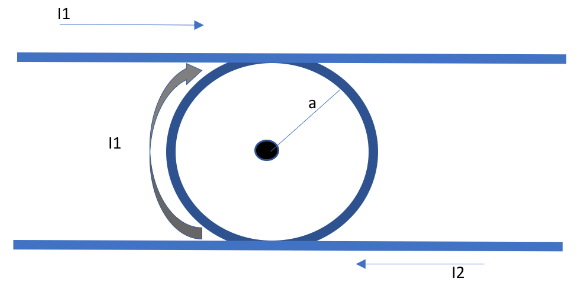a.) What is the magnetic field at the center point of the circle? Note the contributions of the current 11 in the loop, 11 on the wire, and 12 on the bottom wire. The radius is a. b.) Ignoring the loop, what is the magnetic force between the 2 wires for a length L? Are they pulling toward each other or pushing away?
a.) What is the magnetic field at the center point of the circle? Note the contributions of the current 11 in the loop, 11 on the wire, and 12 on the bottom wire. The radius is a. b.) Ignoring the loop, what is the magnetic force between the 2 wires for a length L? Are they pulling toward each other or pushing away?
Related questions
Question
Exam practice #6
Use image as reference

Transcribed Image Text:11
11
a
12
6.)
a.) What is the magnetic field at the center point of the circle? Note
the contributions of the current 11 in the loop, 11 on the wire,
and 12 on the bottom wire. The radius is a.
b.) Ignoring the loop, what is the magnetic force between the 2
wires for a length L? Are they pulling toward each other or
pushing away?
Expert Solution
Step 1
Given that:

Step by step
Solved in 3 steps with 1 images
